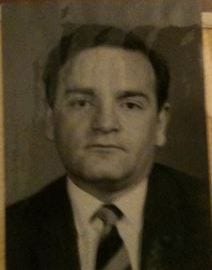 |
| Stanley Shaldon. Photo by the author. |
Stanley Shaldon belonged to that first generation of nephrologists who made dialysis available at a time when uremia was a sentence of death. He was one of the bright young registrars whom Professor Sheila Sherlock took with her from the Royal Postgraduate Medical School at Hammersmith to the Royal Free Hospital to work on liver diseases. At some stage, however, she decided to reassign him to work on kidneys at the old Lawn Road Fever Hospital in Hampstead. There Stanley used a Travenol tank and a Kolff coil dialyzer and developed one of the earliest hemodialysis units in England. At first he was dialyzing jaundiced patients with hepatorenal syndrome, using regional heparinization to prevent them from bleeding, with heparin injected on the arterial side and protamine on venous.
There was no Scribner shunt available at the time in England, and to obtain access to the circulation, Stanley developed percutaneous cannulation of the femoral artery and vein by the Seldinger method, using stiff catheters that he himself made out of a special Norwegian material. Later he had the bright idea of inserting both catheters through the femoral vein into the iliac veins and the inferior vena cava, one high up and the other lower, in order to avoid having to puncture the femoral artery repeatedly. He also attempted to maintain patients with chronic renal failure, and kept a young woman alive by twice-weekly dialysis for several months by cannulating her twice a week until at last she developed a hematoma of the iliopsoas muscle and became unable to walk.
At the end of dialysis, the blood in the dialyzer and the connecting tubes would be heparinized, and the entire circuit put in a pillowcase and stored in a refrigerator for the next use. On one occasion, an old set on which the nurses would regularly practice was accidentally used for a patient. Stanley was unaware of this and as the patient began to shiver from an infusion of presumably gram-positive organisms, he demonstrated the case to visitors as a classical case of dialysis disequilibrium, a popular concept at the time. Often there was a question of how long a particular dialysis should be continued, and to determine this the blood urea was measured every two hours in a small laboratory set up near the dialysis room. Nocturnal dialysis was also attempted by using a dialysate with ice in a bathtub to prevent the proliferation of organisms.
Stanley conducted many studies. He attempted to use Evans blue as a test for diagnosing amyloidosis. He measured blood flow in acute renal failure with a very antiquated x-ray machine. He was the first to attempt and advocate unattended home dialysis. In patients with acute renal failure not needing dialysis he sustained them with a special drink composed of eggs and alcohol. His unit was a model of innovation, and a constant stream of visitors from England and Europe would stop by, some after visiting Prof. Sheila Sherlock’s liver unit at Gray’s Inn Road. Many papers were published, and there was an international symposium on acute renal failure that Stanley organized in London. In 1963 he founded the European Dialysis and Transplant Association with Professor Drucker of Amsterdam and David Kerr of Newcastle.
Stanley was always a controversial figure and the right man to develop new programs. Even at Cambridge in medical school he had a reputation for being one of the roughest ever water polo players. At Lawn Road he was able to secure funding from drug firms, at night invaded the premises of the social workers to expand the unit, and was very demanding of his medical fellows and of the nursing staff. The nurses would often complain to the matron asking he be fired. Eventually he had a falling out with Professor Sherlock and left the Royal Free Hospital to set up a private dialysis center unit a little up the road in Hampstead. There he was able to train a substantial number of patients able to do unattended nocturnal home dialysis, first in Britain and later from many other countries in Europe, Asia, and Africa. When he decided that his prospects for advancing his academic career in England had come to naught, he left to work in Europe, where he collaborated with distinguished investigators such as Professors Jonas Bergström in Sweden, Karl Koch in Germany, and especially Charles Mion, working for many years as a visiting professor at Nimes, a branch of the University of Montpelier. On his retirement, he moved to Monaco, where he owned a yacht and would often sail to Corsica and sometimes as far as Greece and Turkey.
Stanley was well educated and entertaining. He had read Axel Munthe’s Book of San Michele and delighted in telling the story of how the two bodies being transported to be buried in their own country got mixed up. He loved Indian food and knew all the good restaurants in London. As he aged he grew mellow and became one of the wise old men of nephrology. He wistfully concluded that home dialysis as a way to make patients self-reliant was largely a failure and had not become the “insulin of the chronic nephritic.” He questioned the emphasis on profits in dialysis and remained at heart a pioneer and investigator who looked beyond the routine of clinical dialysis. He is to be remembered as a remarkable man, who deserves a special place in the annals of the history of hemodialysis.
GEORGE DUNEA, MD, Editor-in-Chief
Spring 2020 | Sections | Nephrology & Hypertension

Leave a Reply